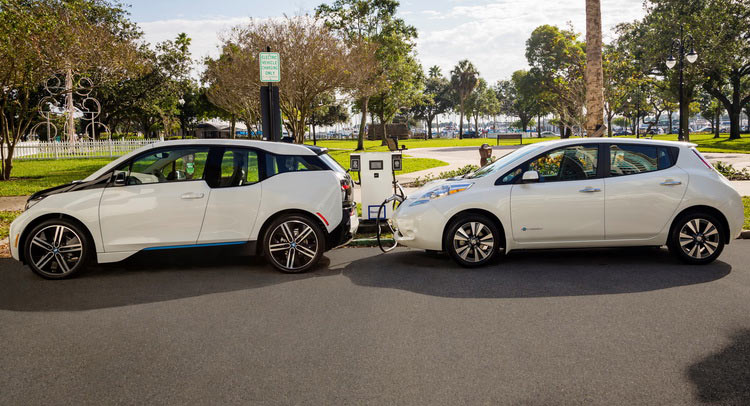BMW and Nissan have joined forces in order to offer customers DC Fast charging at 120 locations across 19 states in the US, further supporting Nissan LEAF & BMW i3 drivers.
The dual fast chargers include both CHAdeMO and CCS connectors, currently suitable for all DC Fast charging-capable electric vehicles in the US. Location-wise, we’re looking at California, Connecticut, Florida, Georgia, Illinois, Indiana, Maryland, Minnesota, Missouri, New Mexico, Nevada, New York, North & South Carolina, Ohio, Pennsylvania, Tennessee, Virginia and Wisconsin.
The 50kW fast charging stations can charge your Nissan or BMW EV up to 80% in just 20-30 minutes – which is a significant improvement over the typical Level 2 (240V) chargers.
In order to make your way to such a station, if you’re in a BMW, all you need to do is use the i3’s ConnectedDrive system via in-vehicle Navigation or by using the BMW i Remote App. Nissan drivers on the other hand can use the Nissan EZ-Charge smartphone app.
Cliff Fietzek, Connected eMobility manager for BMW USA said that his employer continues to “pursue new ways to support the development of a robust public charging infrastructure that will benefit current and future BMW i3 owners across the country. This BMW-Nissan project builds on BMW’s ongoing commitment to participate in joint partnerships designed to expand DC Fast charging options nationwide for all EV drivers.”
Fietzek also said that “Together with Nissan, we are focused on facilitating longer distance travel so that even more drivers will choose to experience the convenience of e-mobility for themselves.”
Nissan’s director of EV sales & marketing Andrew Speaker added that “Nissan takes a three-pronged approach to growing public EV charging options for LEAF drivers by installing quick chargers in the community, at corporate workplaces and at Nissan dealerships. By working with BMW to increase the number of available public quick-chargers, we are able to further enhance range confidence among EV drivers across the country.”
By working together, both manufacturers can look to spearhead the EV revolution well into the second half of the decade. Of course, in terms of infrastructure, this is only the beginning.






